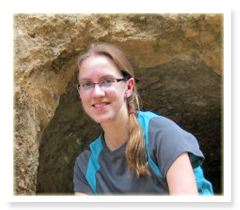WELCOME
Welcome to the Structural Geology Research Group at the University of Nebraska-Lincoln. We investigate the development of mountain chains and the associated sedimentary basins, using and integrated approach that combines remote sensing, analog modeling, field campaigns and seismic interpretation.
ABOUT ME - Caroline Burberry
 I study the tectonic development and petroleum potential of fold belts and foreland basins
worldwide and have recently worked on regions in the Rocky Mountains (USA), the Zagros Mountains (Iraq-Iran) and the Kalimantan Fold Belt, Indonesia.
Other areas of interest include the construction of balanced cross-sections through deformed regions and the prediction of fracture networks in reservoir units.
Current research focuses on understanding the effect of early or basement faulting on subsequent deformational events within a foreland basin system.
I study the tectonic development and petroleum potential of fold belts and foreland basins
worldwide and have recently worked on regions in the Rocky Mountains (USA), the Zagros Mountains (Iraq-Iran) and the Kalimantan Fold Belt, Indonesia.
Other areas of interest include the construction of balanced cross-sections through deformed regions and the prediction of fracture networks in reservoir units.
Current research focuses on understanding the effect of early or basement faulting on subsequent deformational events within a foreland basin system.
I gained my PhD in 2008 from Imperial College, London (with time spent working at The Pennsylvania State University and Uppsala University). Following my PhD, I worked at the University of Utah, before joining the University of Nebraska-Lincoln in the fall of 2010.
In addition to my duties at UNL, I am an associate editor for the AAPG Bulletin, and for the Central European Journal of Geosciences. I served on the SEP for IODP from 2011-2014.
WHAT IS STRUCTURAL GEOLOGY?
Structural Geology is the study of deformation patterns in rocks - folds, faults and other strain markers. The guiding principle is that the behaviour of a given rock of defined properties (rheology) with a particular weakness is predictable.
If a defined force (stress) is applied to a known rock, deformation (strain) occurs in a predictable pattern. Therefore, if we see that pattern of deformation in a rock, we can immediately work backwards to determine the force that has been applied - i.e. the geological event. Ultimately, the geologic history of an entire region can be built up from this type of analysis.